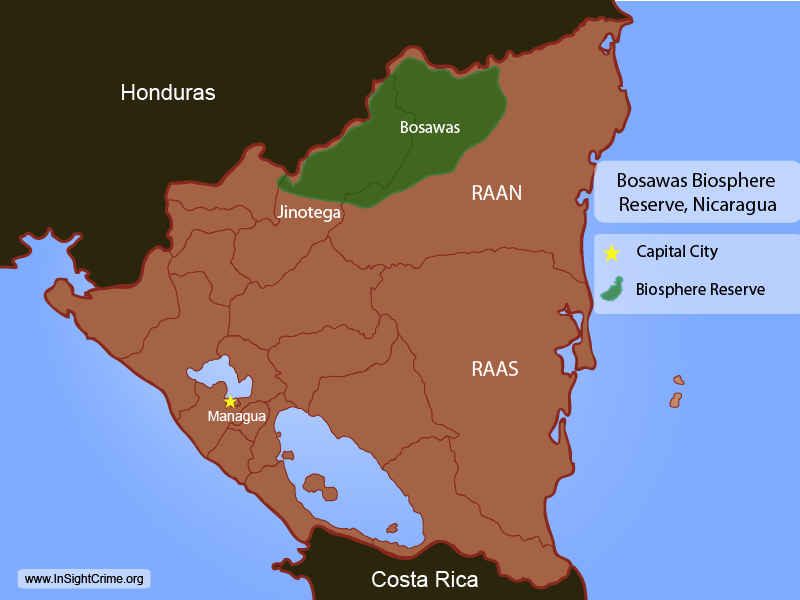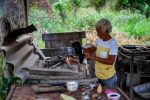
Authorities in Nicaragua seized over 1,400 cubic meters of timber harvested illegally from a northern forest reserve in 2013 — likely just a fraction of what was extracted by illegal wood mafias supplying markets in Asia.
National Forest Institute (INAFOR) director William Schwartz said the wood came from the Bosawas Biosphere Reserve, which lies at the western edge of the North Atlantic Autonomous Region (RAAN) of Nicaragua, reported El Nuevo Diario.
According to Schwartz, most of the wood is smuggled out through border “blind spots” into Honduras, whereas timber cut down in the south is trafficked into Costa Rica.
Schwartz added that INAFOR also plans to create a network of control points to examine wood shipments.
Environmentalist Jaime Incer Barquero said the Nicaraguan army’s Ecological Batalion had also taken various measures to combat timber trafficking, including forbidding night shipments to reduce the chances of failing to detect false permits.

InSight Crime Analysis
Nicaragua’s illegal timber trade has become a major problem in recent years. Exports of granadillo — a precious wood used to make musical instruments and furniture — grew from just over $100,000 to $6 million between 2008 and 2011. In 2012, authorities seized over 1,300 cubic meters of lumber, according to Confidencial.
The Bosawas reserve, Central America’s largest forest reserve, has been a particular target for land traffickers, many of whom use the stolen land for illegal timber extraction. According to authorities, over a third of the forest in the reserve was lost to deforestation between 1987 and 2010.
SEE ALSO: Coverage of Eco Trafficking
The trade is driven in part by demand from Chinese buyers, and is run by “wood mafias” operating with the help of corrupt officials and transporters. As noted by Schwartz, Honduras is the first destination of much of the wood shipped out of Nicaragua. Honduran criminals have actively cashed in on the trade, with armed groups from that country reportedly moving deep into Nicaragua to log precious woods.
The location of Bosawas at the edge of the RAAN and near the border with Honduras makes it particularly vulnerable to this kind of incursion. The RAAN has become an important stop-off point for drug shipments, and residents of the region have complained of an influx of Honduran traffickers.
Granadillo trafficking is also a major concern in the RAAN’s southern neighbor, the South Atlantic Autonomous Region (RAAS).
Timber trafficking, worth up to $100 billion worldwide is a major problem in other parts of the region including Guatemala, Venezuela and Costa Rica and is believed to have links with major criminal groups in Colombia and Peru.
- Eco Trafficking
- Nicaragua











